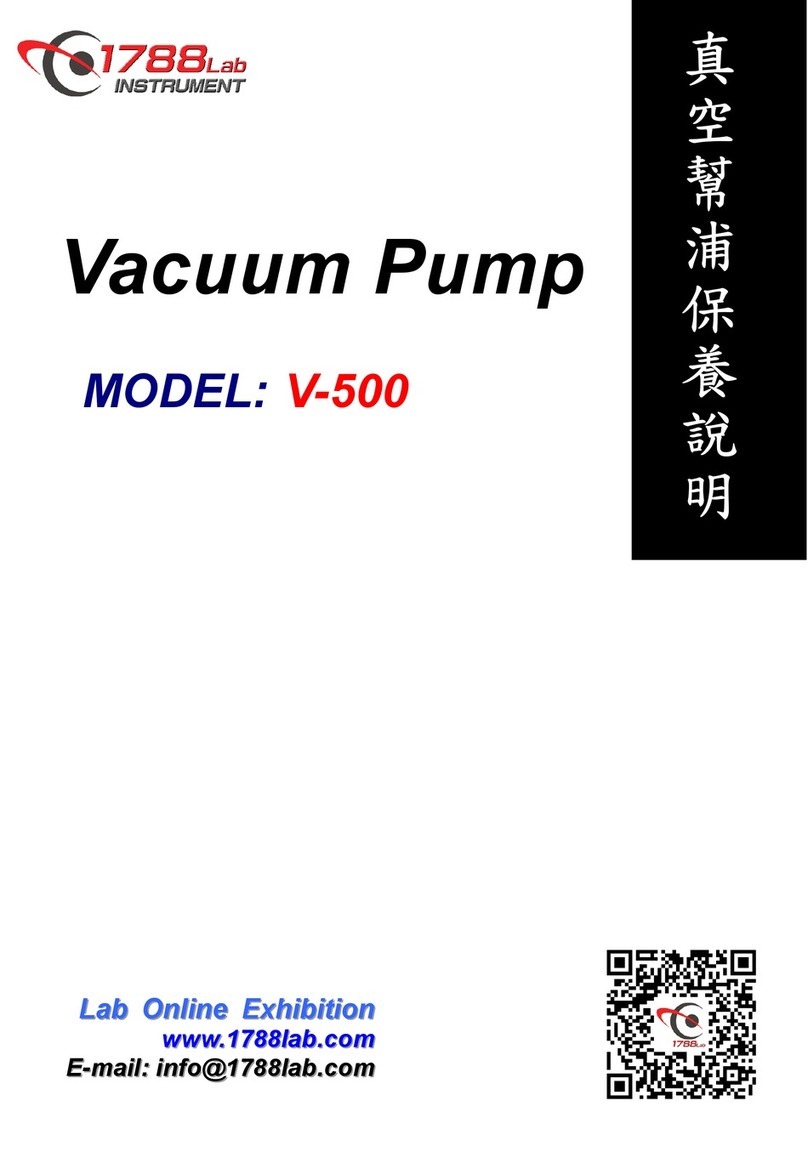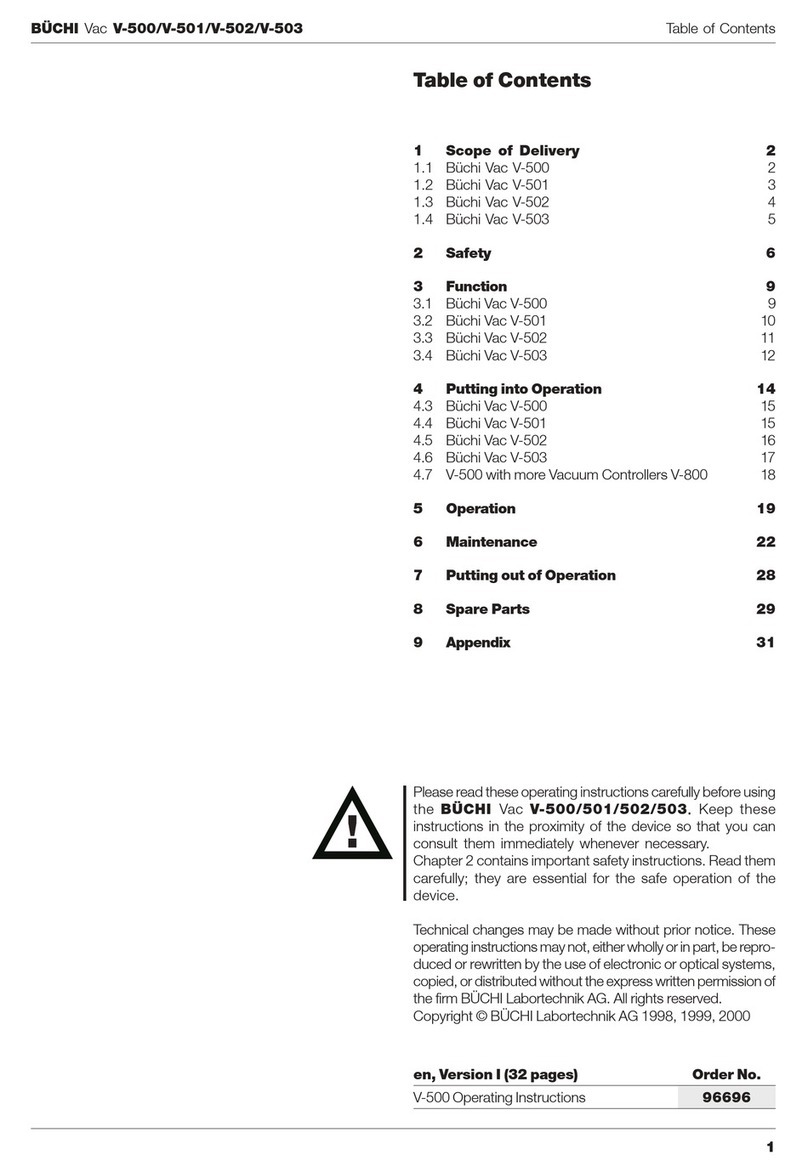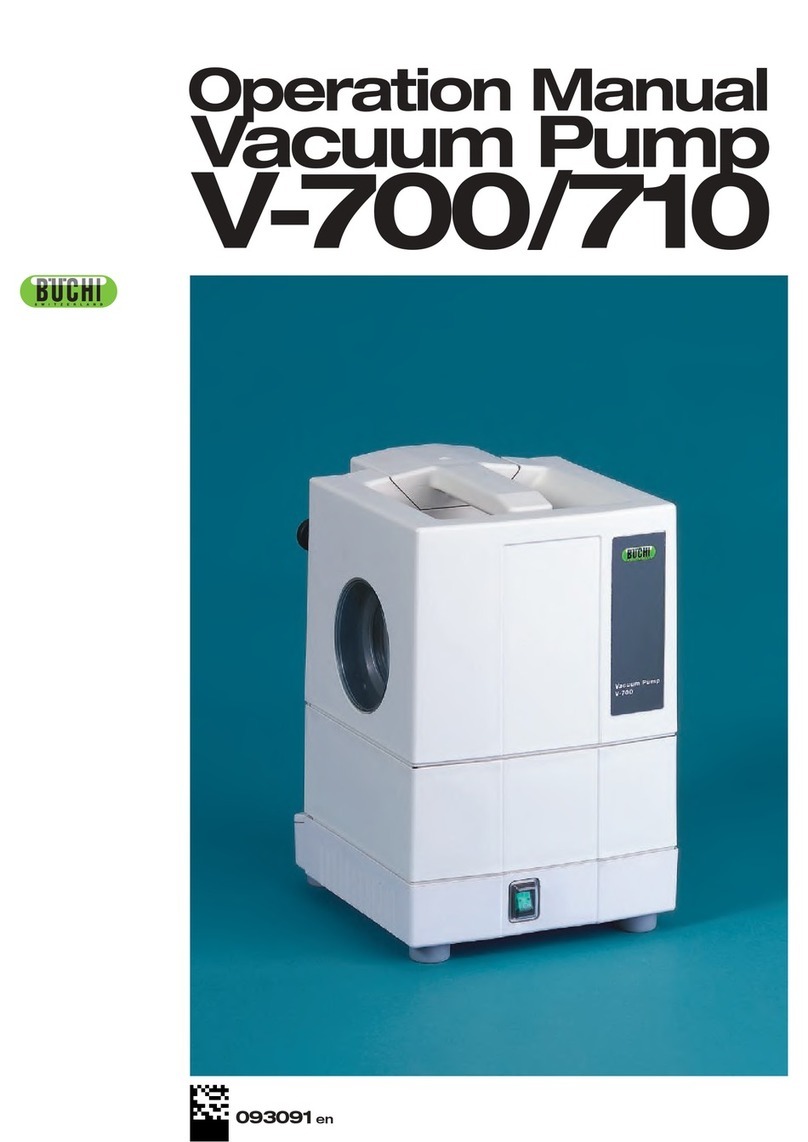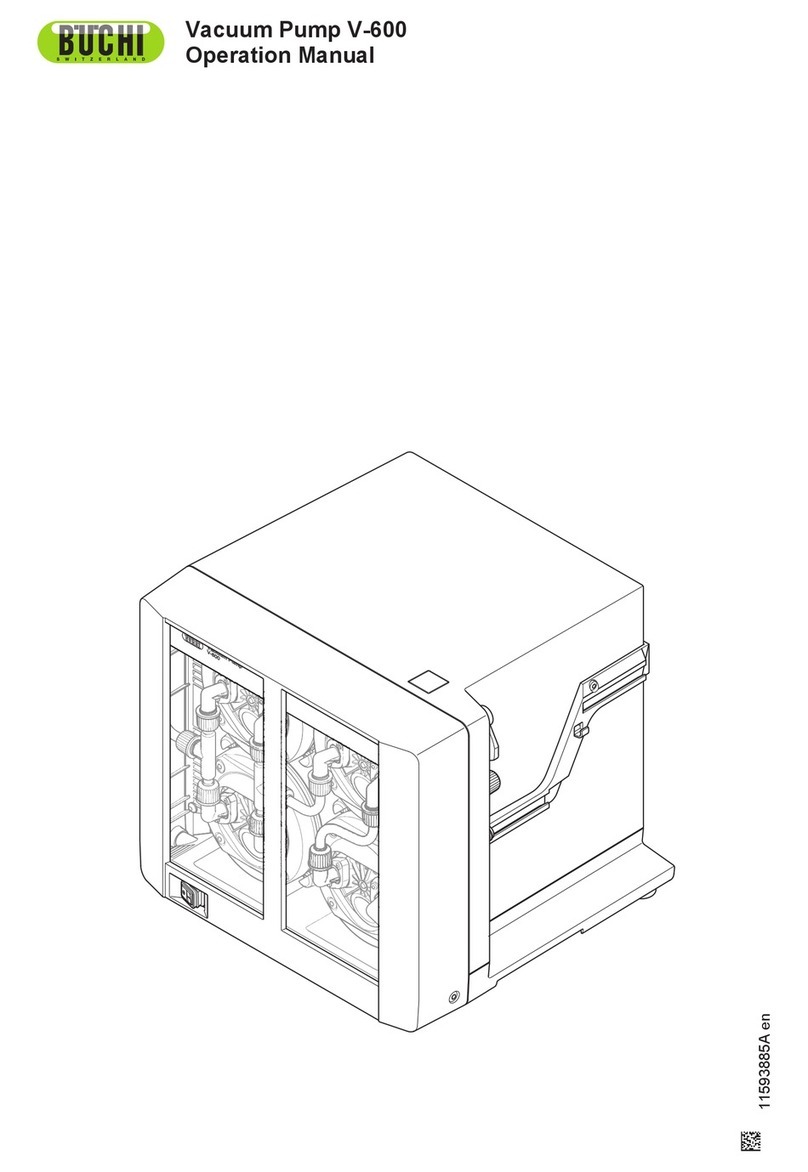BÜCHI Labortechnik AG Contents
Operation Manual Vacuum Pump V-100 iii
Contents
1 About this document...........................................................................................................5
1.1 Warning notices in this document........................................................................................................ 5
1.2 Symbols............................................................................................................................................... 5
1.2.1 Warning symbols .....................................................................................................................5
1.2.2 Mandatory directive symbols ...................................................................................................6
1.2.3 Other symbols..........................................................................................................................6
1.3 Available languages............................................................................................................................. 6
1.4 Trademarks.......................................................................................................................................... 6
2 Safety....................................................................................................................................7
2.1 Intended use........................................................................................................................................ 7
2.2 Use other than that intended ............................................................................................................... 7
2.3 Staff qualification ................................................................................................................................. 7
2.4 Residual risks ...................................................................................................................................... 8
2.4.1 Dangerous vapors.................................................................................................................... 8
2.4.2 Faults during operation ............................................................................................................8
2.5 Personal protective equipment ............................................................................................................ 8
2.6 Modifications........................................................................................................................................ 8
3 Product description...........................................................................................................10
3.1 Description of function ....................................................................................................................... 10
3.2 Configuration ..................................................................................................................................... 10
3.2.1 Front view ..............................................................................................................................10
3.2.2 Rear view ...............................................................................................................................11
3.2.3 Internal view...........................................................................................................................12
3.2.4 Typical application .................................................................................................................13
3.2.5 Type plate ..............................................................................................................................14
3.3 Specifications supplied ...................................................................................................................... 14
3.4 Technical data ................................................................................................................................... 15
3.4.1 Vacuum Pump V-100.............................................................................................................15
3.4.2 Ambient conditions.................................................................................................................15
3.4.3 Materials ................................................................................................................................15
4 Transport and storage ......................................................................................................16
4.1 Transport ........................................................................................................................................... 16
4.2 Storage .............................................................................................................................................. 16
4.3 Removing transit fixings..................................................................................................................... 17
5 Installation..........................................................................................................................18
5.1 Important considerations prior to commissioning .............................................................................. 18
5.2 Installation site................................................................................................................................... 19
5.3 Connecting laboratory equipment...................................................................................................... 19
5.4 Connecting the silencer ..................................................................................................................... 21
5.5 Connecting a Woulff bottle................................................................................................................. 23
5.6 Connecting a secondary condenser .................................................................................................. 24
5.7 Connecting a secondary cooling cold trap......................................................................................... 26
5.8 Electrical connections........................................................................................................................ 27
5.9 Fitting and connecting the Interface I-100 ......................................................................................... 28
5.9.1 Fitting an interface unit to the Vacuum Pump V-100 .............................................................28
5.9.2 Connecting interface unit to Vacuum Pump V-100................................................................ 29
































